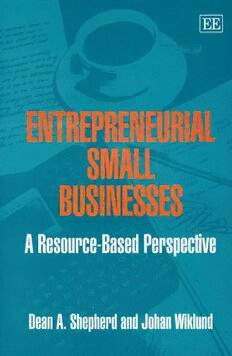
Entrepreneurial Small Businesses: A Resource-based Perspective PDF
266 Pages·2005·0.768 MB·English
Most books are stored in the elastic cloud where traffic is expensive. For this reason, we have a limit on daily download.
Preview Entrepreneurial Small Businesses: A Resource-based Perspective
Description:
The authors of this comprehensive study address why it is that some small firms perform well and others don't, and whether high-performing firms share characteristics that distinguish them from low-performing firms. By exploring bundles of resources and their interaction with other factors, the authors explain important small business outcomes such as growth, performance, entrepreneurial activity, and the chance of receiving debt or equity capital. The authors find that while resources may be valuable, it is essential that small businesses have the processes to facilitate the manipulation of resources into value-creating strategies. Rather than reaching the conclusion that more is always better, the authors tease out the conditions under which certain resources are particularly valuable, as well as the conditions under which these and other resources are less valuable. The resource factors examined range from aspects of the human capital of the small business manager, such as length of education or prior experience with business start-ups, to social capital variables and firm-level resources, such as access to financial capital and competence.
See more
The list of books you might like
Most books are stored in the elastic cloud where traffic is expensive. For this reason, we have a limit on daily download.
